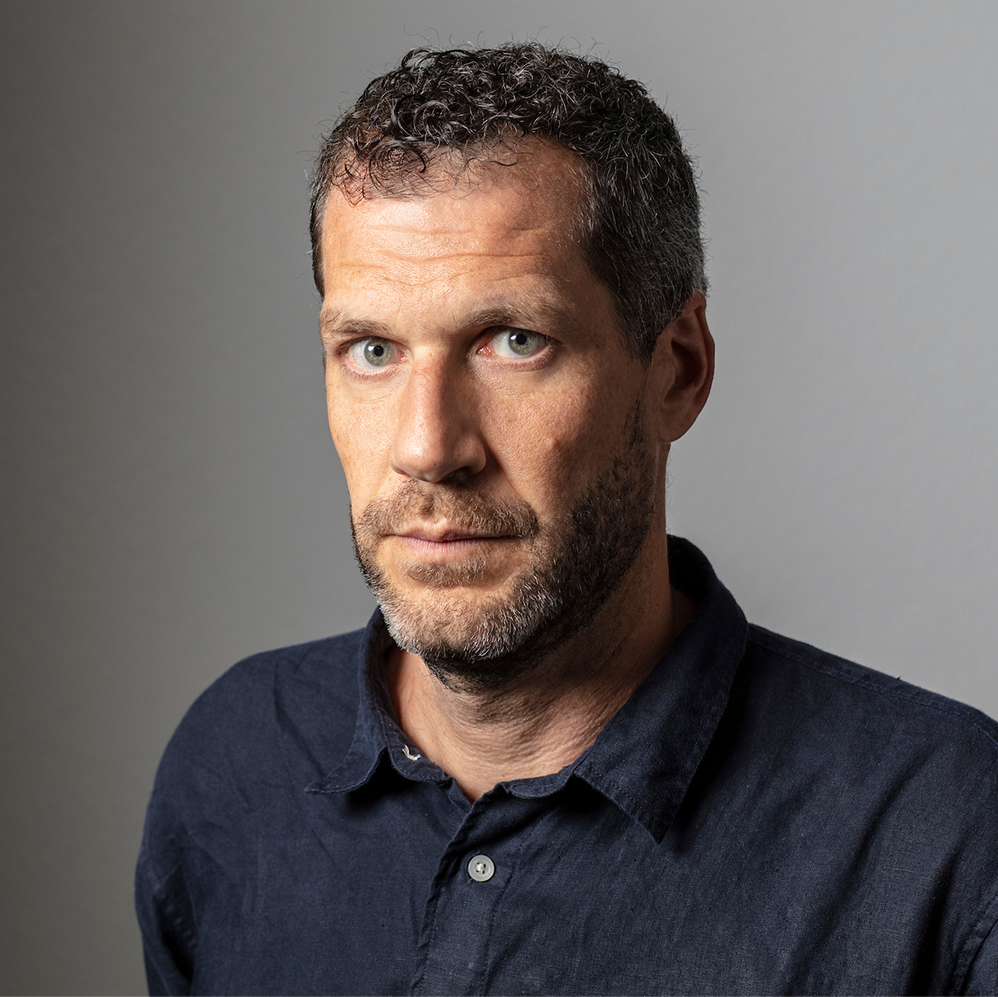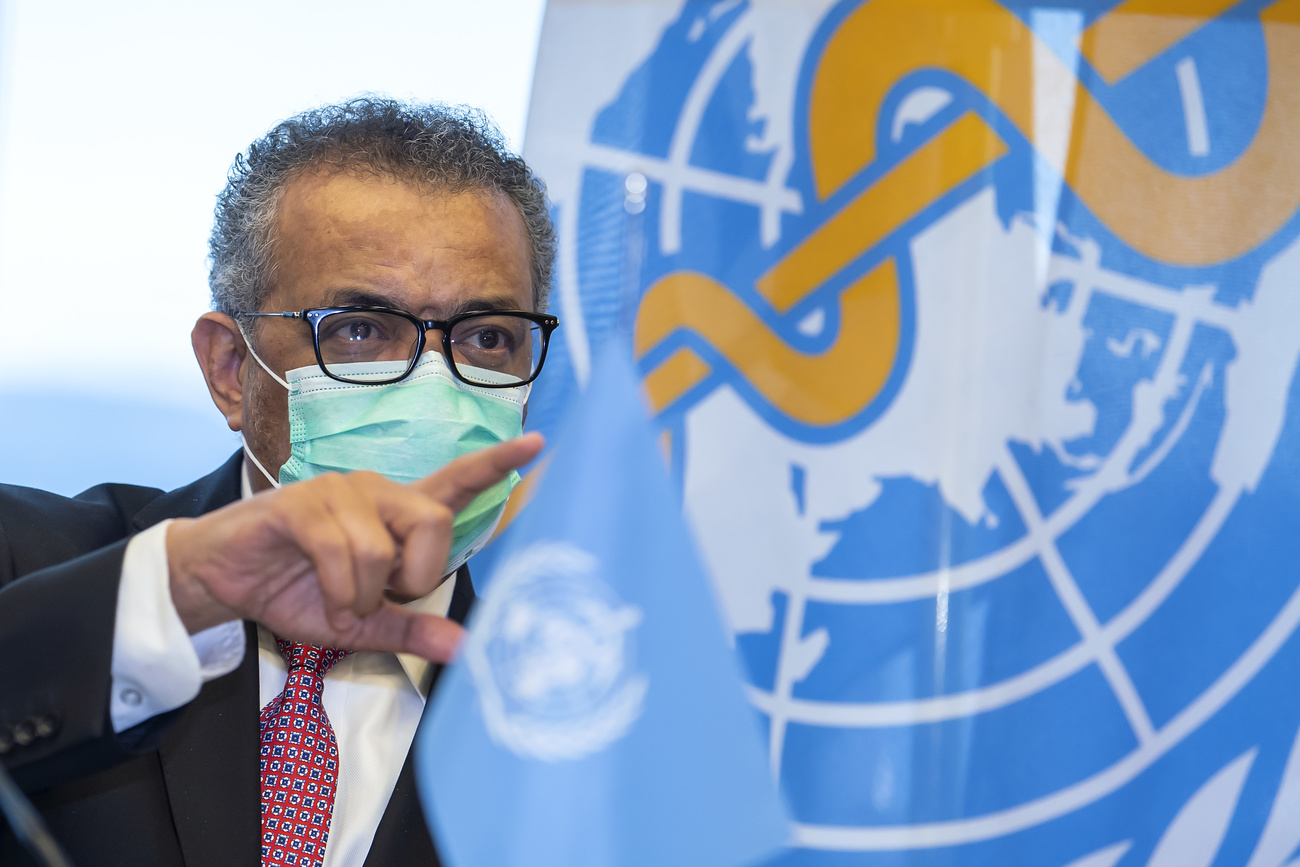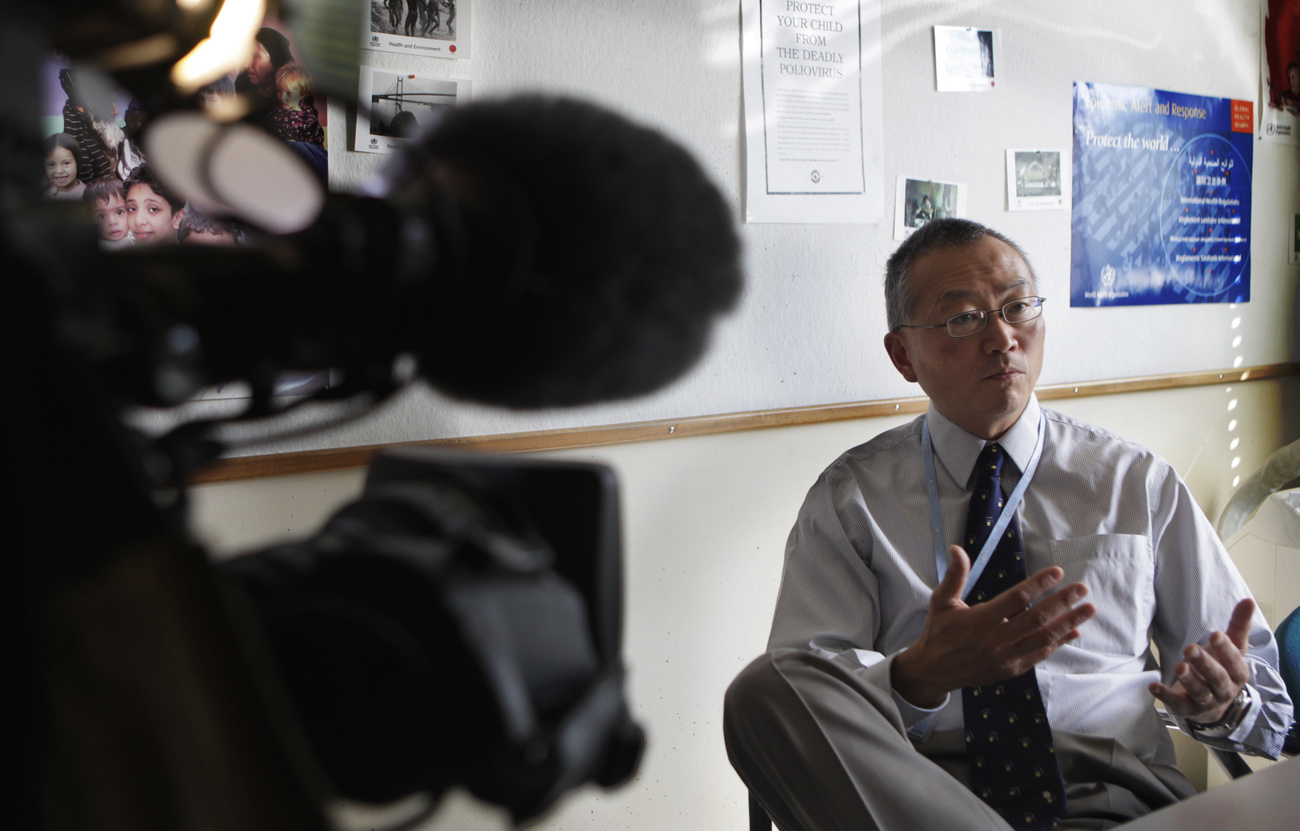How can we address future health threats?
International disaster law offers valuable insights for pandemic treaty negotiations, argue researchers at the Geneva Graduate Institute.
The world of global health, while still fully engaged in the response to the current Covid-19 pandemic, is already considering the prevention and mitigation of the next one. This will be addressed between November 29 and December 1 when diplomats meet for the special session of the World Health Assembly in Geneva. The question on the table is whether to develop a pandemic treaty or other legal instrument.
A lot has been learnedExternal link during the current pandemic, but the next crisis may not follow the same scenario we experienced in the past two years. It may be caused by a different pathogen and it may also happen in a very different world.
We think that international disaster law provides particularly poignant lessons for thinking about the threats at the intersection of health and climate change. Coming from a place of uncertainty about future disasters, international disaster law is an umbrella term used to designate widely acknowledged international standards and best practices in the area of disaster preparedness and response. It is meant to address a wide variety of hazards and contexts. It is promoted by the International Federation of Red Cross and Red Crescent Societies (IFRC).
As climate change continues to transform the patterns of interactions between humans, animals, and the natural environment; a flexible and comprehensive approach is needed to prepare ourselves for future threats. This should consider the possibility of multiple scenarios and different trajectories. Learning from the failures of previous preparedness efforts to respond to the current pandemic, we should make sure we do not end up fighting tomorrow’s battles with yesterday’s weapons.
By definition, disasters can have multiple causes: they can be either natural or man-made; they can result from accidents or negligence. The thinking in terms of international disaster laws is thus open to acknowledging the uncertainty of future threats. The way of thinking which embraces uncertainty is particularly relevant now, as we are increasingly facing the disruption brought about by climate change.

More
Coronavirus: the situation in Switzerland
The effects of climate change
As an example, in Kenya, water shortages have forced farmers to abandon cows for camels, the only animal which can survive periods of severe drought. From the climate perspective, this could sound like welcome news: research at University of Zurich has demonstratedExternal link that camels emit less methane than cows and sheep. However, camels can also be carriers of MERS, a viral respiratory illness that can spread to humans.
Changing climate conditions and globalisation can also make new places habitable for different species. Ebola-carrying bats may move to new areas in search of warm and wet habitats. Scientists working at the Guantanamo naval base have also discoveredExternal link a dangerous mosquito species which can spread Zika, Dengue or yellow fever. New to the island, it has likely travelled there in shipping containers.
Climate change may also affect the very infrastructure on which we rely to prepare ourselves for public health emergencies. Rising sea levels and weather anomalies, such as increased storm and hurricane activity, can cause damage to roads, energy infrastructure, and hospitals, making it more difficult to prepare for an emergency and to deliver aid when it is needed.
While the above-described facts may seem random at first, they testify to the complexity of the relation between public health and climate change and to the uncertainty about the nature of future threats. This is why we argue that a multi-hazard approach is needed to effectively address different types of crises.

More
Why melting glaciers affect us all
Embracing uncertainty
International disaster laws provide a way of thinking that takes uncertainty and a multi-hazard approach as its starting point because they tend to leave the definition of disasters relatively open. The IDRL Guidelines adopted by the International Red Cross and Red Crescent Movement define a disaster as “a serious disruption of the functioning of society, which poses a significant, widespread threat to human life, health, property or the environment”.
Covid-19 has demonstrated the importance of economic considerations when dealing with a pandemic. The pandemic has laid bare the systemic inequalities between and within our societies, as it affected low- and middle-income countries and minorities in high-income countries disproportionately.
Disaster law acknowledges that effective risk reduction strategies are intertwined with sustainable development. For example, the UN-endorsed Sendai Framework states the need to protect livelihoods, socioeconomic and natural assets alongside health. It calls for a multi-hazard approach in addressing “vulnerability, capacity, exposure of persons and assets” and calls for protection of human rights, “including the right to development”.
The Sendai framework acknowledges that more action is needed to tackle the “underlying disaster risk drivers, such as the consequences of poverty, inequality, climate change and variability, unplanned and rapid urbanisation, poor land management, and compounding factors such as demographic change”.
The framework stresses that an effective response to a crisis is dependent upon the capacities of affected countries, which can be enhanced by means of international cooperation. The capacity building may take the form of investment in scientific research, technology transfer, and the sharing of non-sensitive data and of good practices. The availability of materials and technologies protected by IP laws can prove essential in ensuring effective preparedness and response towards future crises.
The next pandemic
The next health crisis might well be a Covid-like pandemic that can be prepared for by replaying the current scenario and correcting the governance, economic, political, and scientific mistakes that have been made. However, it can also be another pathogen that spreads and affects health differently. It might not be airborne, it might affect children severely, it might have affinity to young healthy adults instead of people with underlying conditions. It may not be possible to find a vaccine for it in a matter of months. After all, the HIV pandemic is still waiting for an effective vaccine.
Given that we do not know how the next large-scale health emergency is going to play out, a comprehensive and multi-hazard approach is needed. We argue that international disaster laws can offer a lens through which the negotiations for and decisions on a pandemic treaty can be examined.
The views expressed in this article are solely those of the authors, and do not necessarily reflect the views of SWI swissinfo.ch.

In compliance with the JTI standards
More: SWI swissinfo.ch certified by the Journalism Trust Initiative














You can find an overview of ongoing debates with our journalists here . Please join us!
If you want to start a conversation about a topic raised in this article or want to report factual errors, email us at english@swissinfo.ch.